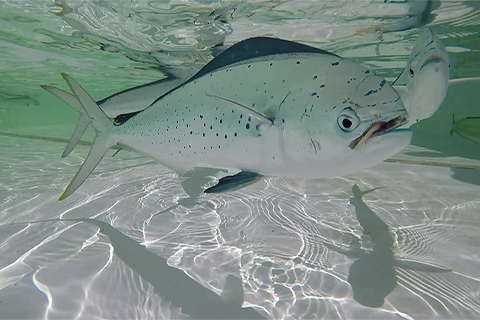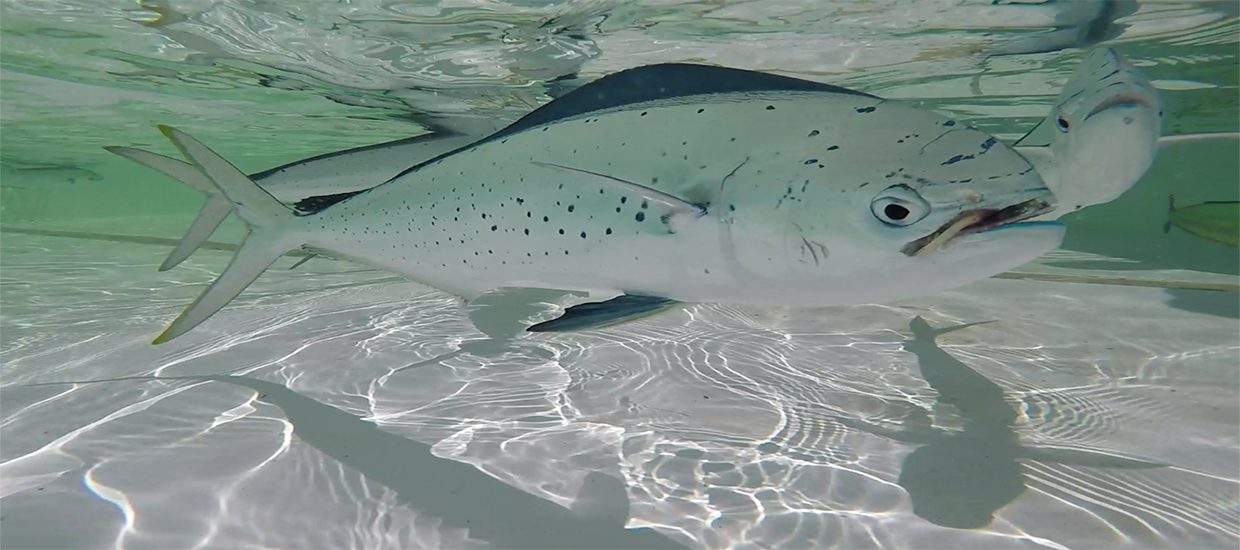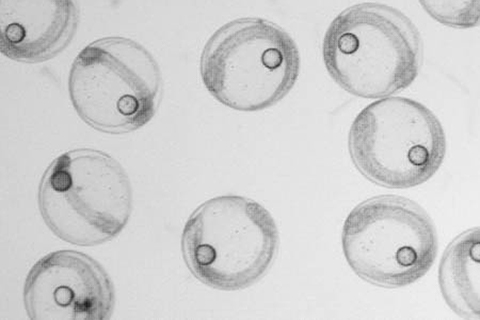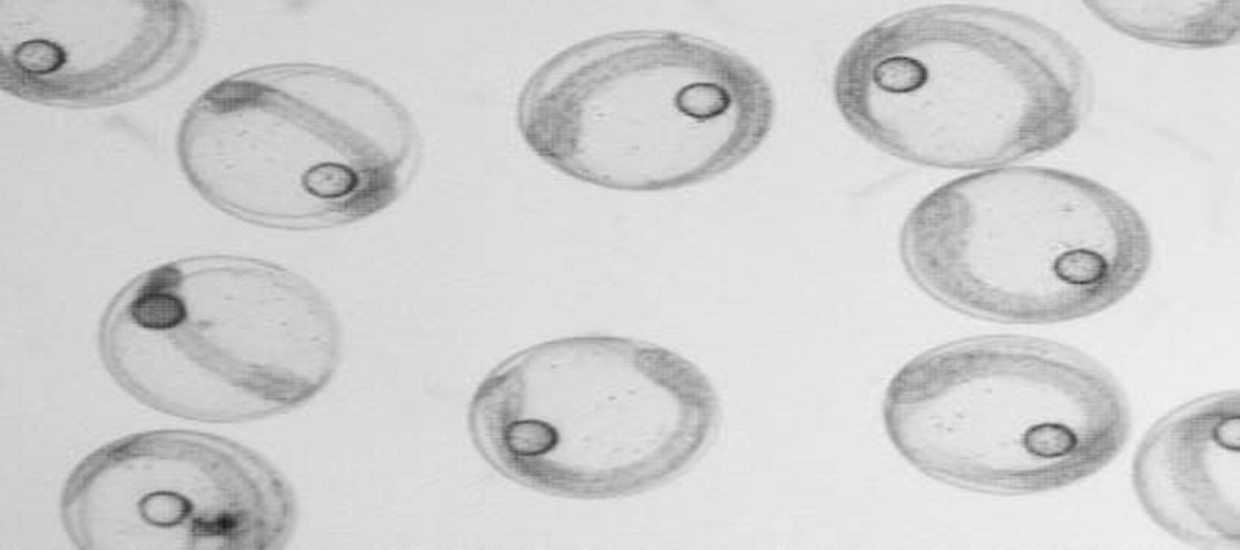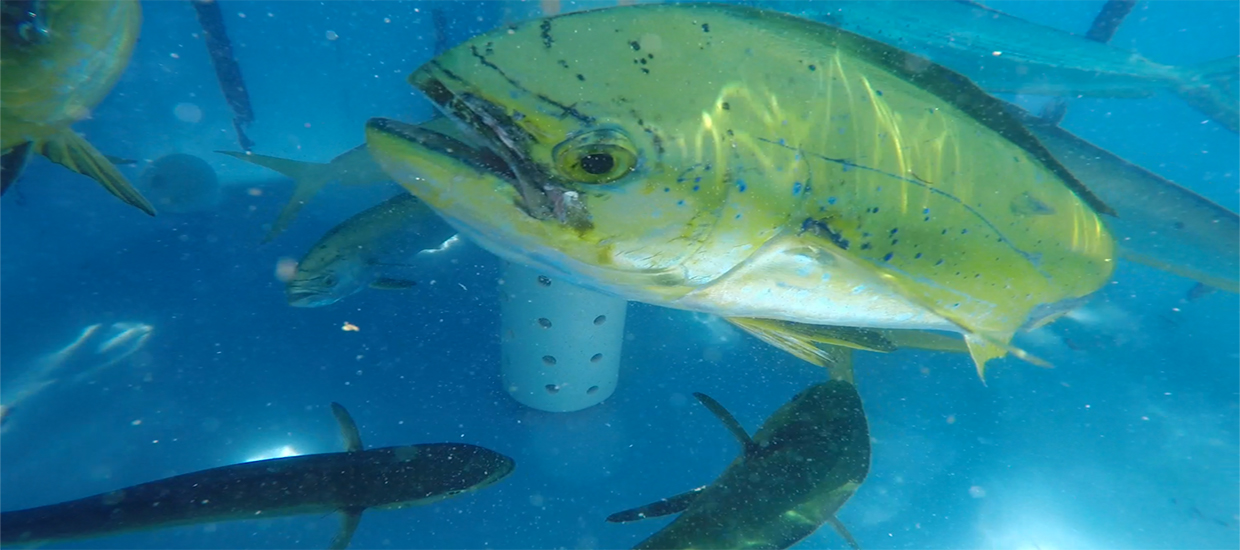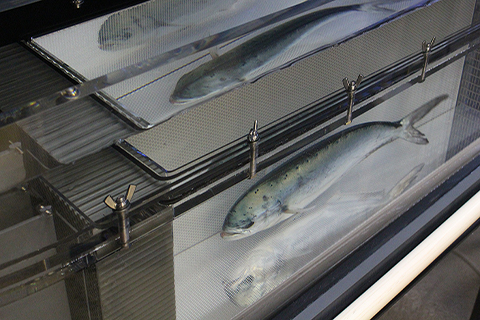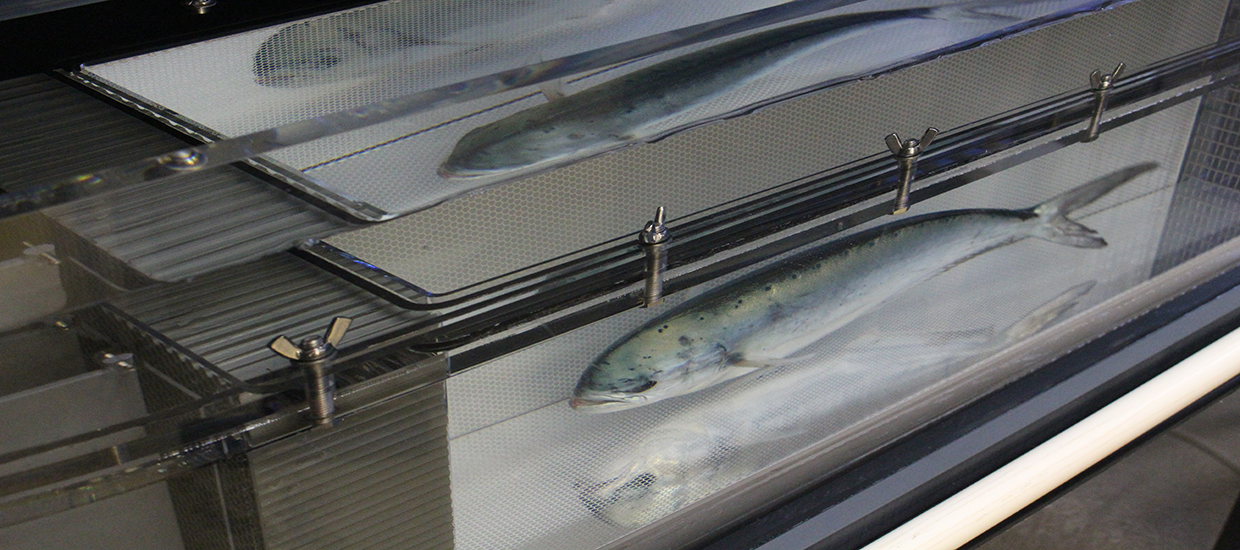The Deep Water Horizon (DWH) oil spill in the Gulf of Mexico was the largest oil spill in US history and released ~ 3.2 million barrels of crude oil into the Northern Gulf of Mexico over an 87 day period. The DWH spill overlapped spatially and temporally with spawning of a number of large pelagic fish species, raising concerns of impacts on adults as well as early life stages of these ecologically and economically important fish species. In 2010/2011, we established mahi-mahi brood stock at the University of Miami’s Experimental Hatchery (UMEH) which has provided access to all life stages of mahi-mahi for oil toxicity studies since (Broodstock Video).
Our studies to date have demonstrated impaired swimming performance in juvenile, as well as young adult mahi-mahi, an observation which is coupled with reduced maximal oxygen consumption and reduced aerobic scope in the young adult mahi-mahi (Mager et al 2014; Stieglitz et al 2016). Our early work on oil toxicity to pelagics revealed cardiotoxicity in early life stages of yellowfin tuna, Bluefin tuna and mahi-mahi (Incardona et al 2014, Esbaugh et al 2016) and that toxicity is greatly potentiated by natural light (Alloy et al 2016). Through funding obtained from the Gulf of Mexico Research Initiative (GoMRI) a consortium to study the impacts of the 2010 oil spill, RECOVER , was established in 2015.
Despite clear cardiotoxicity, mahi embryos and larvae exposed to oil do not show reduced oxygen uptake. Rather, larvae exposed to oil during embryonic development at 26°C show increased rather than decreased oxygen uptake, an effect that is abolished at 30°C where larval metabolic demand likely matched maximal oxygen uptake rates (Pasparakis et al 2016). The implications of this increased energy demand are staggering, as the developing embryos and larvae deplete their yolk sac energy stores faster when exposed to oil, possibly impairing hatch and post hatch survival (Fig 4). A large scale RNAseq experiment revealed that a number of physiological and developmental processes in addition to cardiac function and development are impaired by oil exposure in mahi-mahi embryos and larvae (Xu et al, 2016). Among other things the RNAseq data suggests that peripheral sensory system development and function appears to be impacted by oil exposure, suggestions that are currently being investigated.



